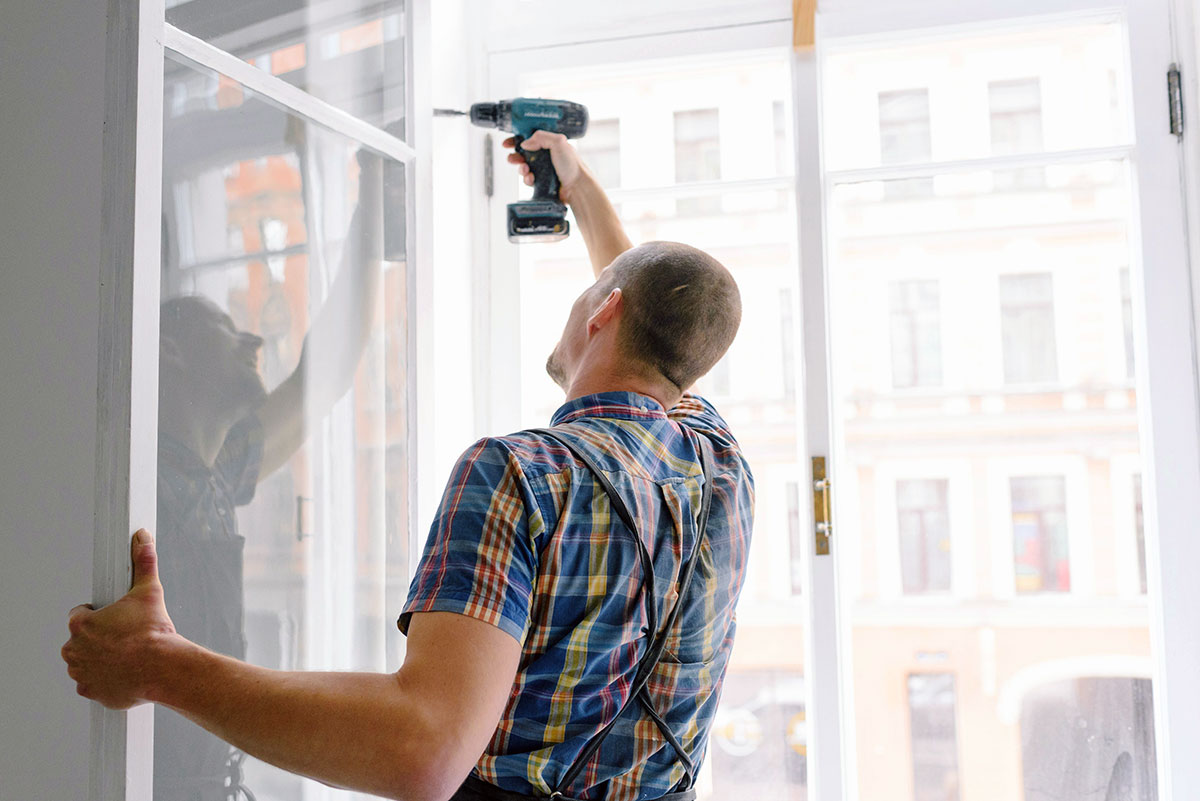When you need money for a home improvement project or repair, you’ll need to plan ahead and consider your personal budget. For most people planning a large project, this means securing a loan. Fortunately, you have a lot of choices for obtaining a home improvement loan, but you’ll want to research all your options thoroughly before settling on the best mortgage lender for your home renovation.
Home improvement loans are offered by most types of mortgage lenders. However, you may not qualify for every type of loan. Like any loan, your eligibility will depend on several factors such as your credit score, the amount of home equity you’ve already built up, your income, and the loan amount you need to borrow.
What Are Home Improvement Loans?
A home improvement loan (also called a home renovation loan) is any loan taken out to remodel, repair, or renovate your home. Importantly, there’s often no official loan offered to a borrower called, “home improvement.” Rather, it’s a home equity loan or personal loan or you take out at an agreed upon interest rate and you direct how the funds are used.
There are several different types of loans you can pursue for your home improvement projects, but they generally fall into one of two categories: secured or unsecured loans. Secured loans have an asset connected to them that serves as collateral (like your house), while unsecured loans don’t require collateral.
Most secured loans take the form of a mortgage with extra money added in like a cash-out refinance, home equity line of credit (HELOC), or home equity loan obtained through a mortgage lender. Alternatively, you could also use a credit card or apply for a personal loan from a bank, credit union, or other type of financial institution, and these would be examples of unsecured loans.
7 Types of Home Improvement Loans
Personal Loans
One of the few options for people who don’t have the equity to borrow against their current mortgage is an unsecured personal loan. Unsecured loans are often preferable to using a credit card because you can usually obtain a lower interest rate. However, the rate you get will depend on a few factors such as your credit score, credit history, income, and loan amount. Those with the highest credit scores (typically above 700) will receive a lower interest rate than those with only a “good” credit score (mid 600s).
Personal loans can also be acquired more quickly than a home equity loan or refinance because there’s much less paperwork involved and you can get the money in as little as a day. That said, almost all unsecured loans will have a higher rate than a secured loan because the lender is taking a bigger risk by advancing the money.
Home Equity Line of Credit
A home equity line of credit (commonly called a HELOC) is a secured loan that’s ideal for those who have already built up a good amount of equity in their home. Unlike a lump sum loan like a conventional mortgage, a HELOC opens a revolving line of credit using your home as collateral.
Typically, you’re allowed to draw from this line of credit for 7-10 years, and during this time you can take as much of or as little of the loan approval amount. Depending on the structure of your loan, you may only pay a monthly interest payment during this draw period, and then begin making payments toward the principal once the seven or 10 years is up.
HELOCs are ideal for those who need a lot of flexibility and options with their loan. With a HELOC, you can draw an initial amount to begin your project, then only use what you need when you need it without being penalized. One big downside of HELOC loans is that they carry variable rates which means that your monthly payments can fluctuate over the life of your loan. So, just because you entered into the loan at a low interest rate doesn’t mean you’ll have the same rate five years down the line.
Home Equity Loan
A home equity loan is very similar to a HELOC, except instead of a revolving credit line, you’re simply given a lump sum. These loans are also secured using the equity of your home, so unless you’re at 15% or 20% equity, you may not qualify. Home equity loans are preferable in some respects because you’ll lock in a fixed rate (with a standard loan term of 15 to 20 years) and your monthly payment won’t change for the entire loan term. Plus, you’ll also be putting money toward the principal balance from day one which increases your equity.
These loans are also good for those who have a clear idea of how much their project will cost and are confident it can be executed within this budget.
Cash-out Refinance
Most cash-out refinance loans require the borrower to have at least 20% equity in their home. As the name suggests, this type of loan requires you to refinance your entire home mortgage for an amount that’s higher than what you owe on the house. You can then use this extra cash for any home project or home improvements you’d like. This is a good loan option for borrowers who can secure a lower interest rate on their mortgage and for those who want the simplicity of only having one monthly payment at a fixed rate.
However, mortgage refinancing also costs money on top of the loan amount in the form of closing costs, lender fees, titling fees, or appraisal fees. If you already have a low rate on your mortgage you should only consider doing this if you can get a rate at or below your current one. If you refi at a higher level of interest you’ll be stuck paying more over your total repayment term which may be 30 years.
Alternatively, you can choose to refinance your loan at an adjustable rate over a five, seven, or 10-year term. Adjustable rate mortgages (ARM) are a good idea if you know you plan on selling your home in a few years. For example, if you’re remodeling a home with the intention of flipping it a year or two down the line, a cash-out refi may be your best bet.
Title I Loans
Title I loans (also called property improvement loans) are government-issued and backed by the Department of Housing and Urban Development (HUD) and the Federal Housing Administration (FHA). One major benefit of these loans is that there are no set income limits or minimum credit scores to qualify since they’re targeted to mostly low- and middle-income homeowners who aren’t able to use their home’s equity to secure another type of loan. However, you do have to show a debt-to-income ratio of at least 45% and prove that the home improvement you plan to fund with the loan “protects or improves the basic livability or utility of the property.”
The total loan amount typically must be under $25,000 and will be payable over a 20-year term. FHA home improvement loans can be used for projects like upgrading a home to accommodate a disabled owner, buying new appliances, or making energy-efficient upgrades. It cannot be used for anything considered a “luxury” such as a pool or outdoor fireplace.
Renovation Mortgage Loan
A renovation mortgage is unique among home improvement loans because it must be taken out at the same time you’re buying your home. These are sometimes thought of as “fixer-upper” loans. Typically, they are popular with homebuyers who may have found a house they like and can afford, but that needs work done to it right out of the gate. These loans typically have low-interest loans and are ideal for borrowers who may have bad credit or can’t afford to put down a large down payment.
These are government-sponsored loans offered by the FHA or Fannie Mae, and there are few options depending on the work that needs to be done and the amount you’d like to spend on the home repair. When it comes to FHA loans, the FHA 203(k) Standard loan can be used for structural renovations or repair costs over $35,000. An FHA 203(k) Limited has a maximum loan amount of $35,000 (above the amount of the loan for the home itself) and cannot be used for structural repairs. The Fannie Mae HomeStyle Renovation Mortgage also provides a lump sum of money for home improvement but requires an approved contractor to submit plans for the work to secure the loan. After the work is completed and inspected, the bank sends payment directly to the contractor.
Credit Cards
You always have the option to fund your home improvement with credit cards, but you should only consider this option under certain circumstances. First, this option is best for low-cost projects that won’t set you back tens of thousands of dollars. Almost all credit cards will have a high annual percentage rate and unless you plan on paying the total back within a year, the amount you’ll be paying toward interest alone won’t be worth it if you don’t have a strict repayment plan in place.
However, you may be able to find a card offering a 0% introductory rate for the first year, and if you can complete the work and pay it back within this time period, you could essentially be borrowing free money.
How to Choose a Home Improvement Loan

Picking the best home improvement loan will take a little legwork, but it shouldn’t be too difficult once you determine a few things. The first thing you’ll have to look at is how much equity you have in your home and if you’re comfortable borrowing against it. For most homeowners, this means having around 20% equity. Meet with your lender and ask for preliminary quotes for a HELOC, home equity loan, or cash-out refi. If interest rates are low and you have excellent credit, one of these options may be your best bet.
Next, determine the loan amount. If it’s a smaller project (say, under $10,000), you may consider paying with a credit card or taking out a home improvement personal loan. However, for larger projects, you’ll likely find better home improvement loan rates with a HELOC or home equity loan. If using your home as collateral isn’t an option, talk to your lender about a federal home improvement loan program like a Title I loan or renovation mortgage loan.
At some point in life, most of us will have to borrow money for a big purchase whether it’s taking out a car loan, student loan, or home loan. If you’ve been a homeowner for any length of time, you’ll likely find at some point you want to perform a major remodel or repair which means securing even more money. Thankfully, most of these renovations will add value to your home and end up benefiting you in the long run.







